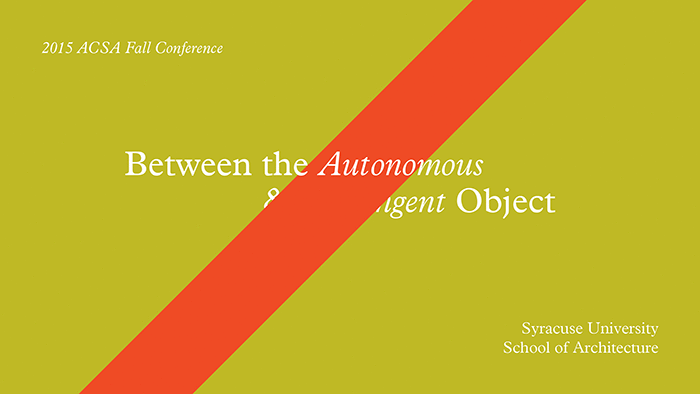Professor Graeme Morland was honored with a major exhibit this semester at the USC School of Architecture. “A RETROSPECTIVE, 50+ YEARS OF ARCHITECTURAL DRAWINGS AND SKETCHES, 1963—2015. BC. (before computer). The work exhibited presumed to be both educational and informative to students of architecture and design at USC today, and hopefully fueled the healthy discussion and debate regarding design description and presentation which now bridges from the soul of emotion with hand drawings, to the current wizardry of digital technology. An exhibition of work, initiated at the Glasgow school of Art, Scotland, developed at the U of I in Chicago, and realized at USC in Los Angeles, covering a 5o+ year period, required the compilation, editing and formatting of hundreds of drawings, generally classified in three categories, namely, A) The “Sketchbook”. Images of places and events visited, B) Drawings that describe “ Visions of Place”, architectural ideas & projects, and C) Drawings that inform the anatomy and material assembly of “Place”, the method and process of “making and constructing.” A catalogue of this exhibit will be forthcoming.
Lisa Little will be a presenter at the Los Angeles AIA ‘Powerful’ symposium at the Annenberg Space for Photography on February 27th. Her topic is entitled “A Diversity of Practice: Expanding Opportunities”.
The Association of Collegiate Schools of Architecture (ACSA) is hosting a recent survey and report by Lauren Matchison on their website. The survey, The Effect of Social Media on Architecture Graduate School Selection, takes a close look at how prospective graduate students use social media as a tool to research architecture schools.
Assistant Professor Alvin Huang has been named to Engineering Record News California’s “Top 20 under 40 2015” and annual award which honors the “cream of the crop in the design and construction industry who have built extraordinary industry portfolios before the age of 40”. Huang recently gave a lecture on his recent work at the CalPoly Pomona Department of Architecture, and will also be lectures in March at Syracuse University School of Architecture and the CalPoly San Luis Obispo LA Metro Program.
The latest built project of Lecturer Nefeli Chatzimina has been nominated for the Mies Van der Rohe Awards 2015 and was featured as a cover for the EK Magazine. During February Nefeli lectured at the BNCA University of Pune, the University of Mumbai and the Studio-X of Columbia University in Mumbai, India.
Professor Kyle Konis, Ph.D, AIA was recently awarded $149,400 from the California Energy Commission (CEC) to support research and development of his project entitled the Occupant Mobile Gateway (O.M.G.), which received the highest ranking during technical peer-review among all proposals submitted statewide. The objective of the O.M.G. is to leverage mobile sensing as a platform to enable design teams to validate and continually refine the performance of low-energy and environmentally responsive design strategies. The project is a continuation of a multi-disciplinary collaboration between Professor Konis and Professor Murali Annavaram in the Viterbi School of Engineering.
Vittoria Di Palma’s book, Wasteland, A History (Yale University Press, 2014) has won two prizes. It was awarded the 2015 J. B. Jackson Book Prize by The Foundation for Landscape Studies, and was the runner-up in the Architecture and Urban Planning category for the 2015 American Publishers Awards for Professional and Scholarly Excellence (PROSE).
Hraztan Zeitlian was appointed to the American Institute of Architects California Council’s prestigious Monterey Design Conference Committee (AIACC MDC), with other USC Faculty Larry Scarpa and Alice Kimm as well as Anne Fougeron, and David Meckel among others. http://aiacc.org/mdc/about-mdc/
Professor Gail Borden was elected to the AIA College of Fellows as the youngest member in California. He was awarded the 2015 USC Associate Award for Artistic Expression, the highest honor the University faculty bestow on it members for significant artistic expression. His solo exhibition “Faceted Line” opened late February at Galleri Urbane in Dallas, Texas presenting his newest paintings which implement space, depth, and color to create shallow and abstract architectural environments. He was recently commissioned by Routledge to do a follow-up book entitled Lineament: Material and Geometry in Architectural Production to build on his best-selling book Matter: Material Processes in Architectural Production.
Associate Professor Charles Lagreco in collaboration with Lecturer Gary Paige and Associate Dean Gail Borden have submitted a grant proposal to USC Neighborhood Outreach for a partnership with the 32nd Street / USC Magnet Center K-12 school to work together on a School of Architecture Research + Design + Build Program to build a portable performance facility to support the school and the neighborhood around USC. The proposal which identifies a $150,000 budget target to design and build the project, is proposed to extend over three semesters in the 2015-16 academic year and is partially funded by the Marnell Endowment recently established to provide support for design build studios in the School of Architecture curriculum.
At the request of the USC Career Center and intended for the entire university community, Professor Michael Hricak recently spoke on, and moderated a panel focused on, Careers in Design.
Lecturer Andy Ku and his firm OCDC have been selected for a public art commission in Downtown Los Angeles. The project takes on the idea of “traffic” as both a cultural mission and an urban contextual activity. The design depicts the signs of nature and culture in a single environment, as a contemporary meditation on traditional Japanese woodblock prints (Ukiyo-e “drawings of the floating word”)
Karen Kensek has two research papers for the upcoming Architecture Research Centers Consortium (ARCC) Conference, Chicago, IL, 2015.
Hijazi, Mohammad, Karen Kensek, and Kyle Konis, “Bridging the gap: supporting data transparency of BIM to BEM”
Chen, Yiyu, Karen Kensek, Joon-Ho Choi, and Marc Schiler, “Using modified weather files for predicting future building performance,” accepted for the Architecture Research Centers Consortium (ARCC) Conference
In January, Rob Ley won an invited design competition to develop and fabricate a permanent installation for the Portland Zoo in Oregon. Also in January, Rob completed a permanent installation for the Kansas City Police Department.

 Study Architecture
Study Architecture  ProPEL
ProPEL 











